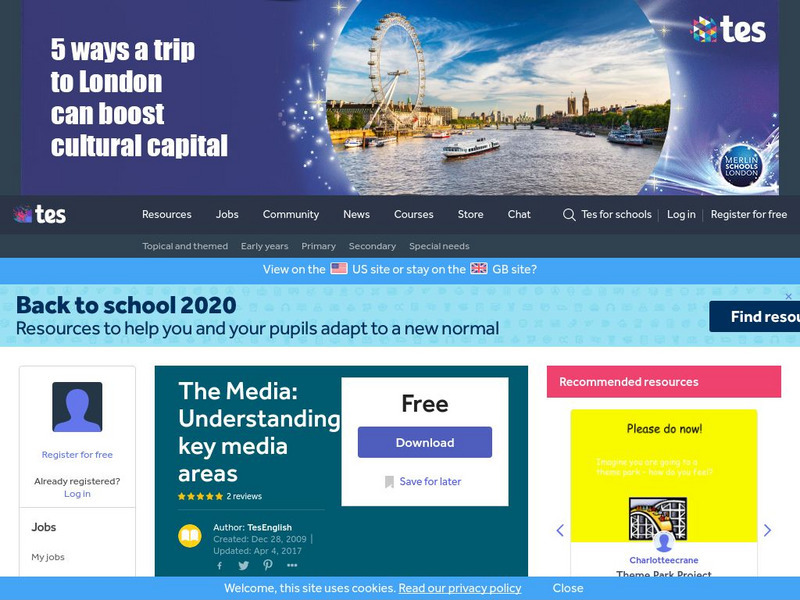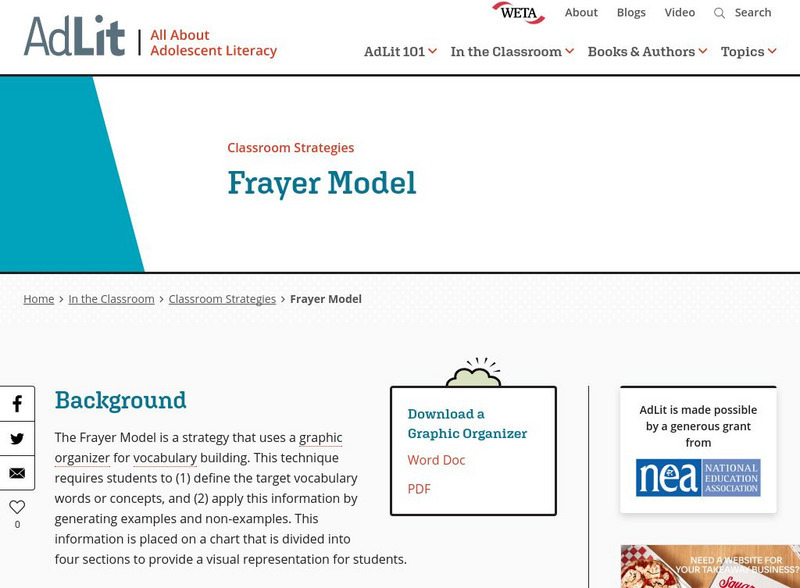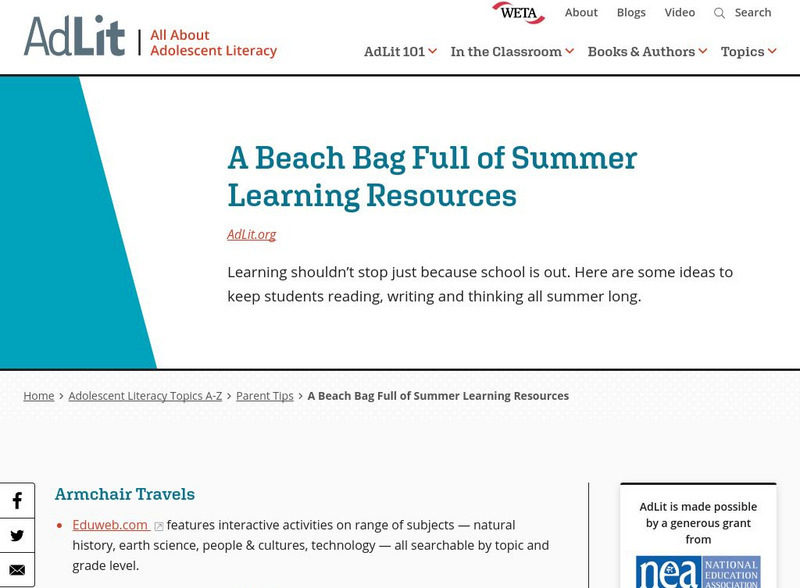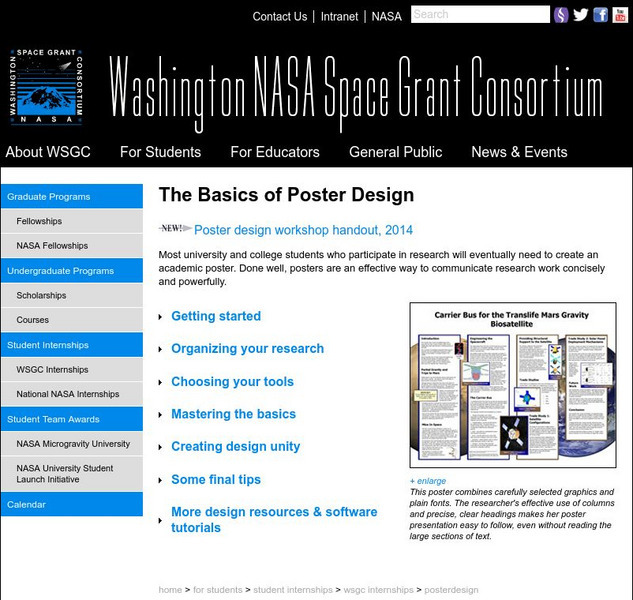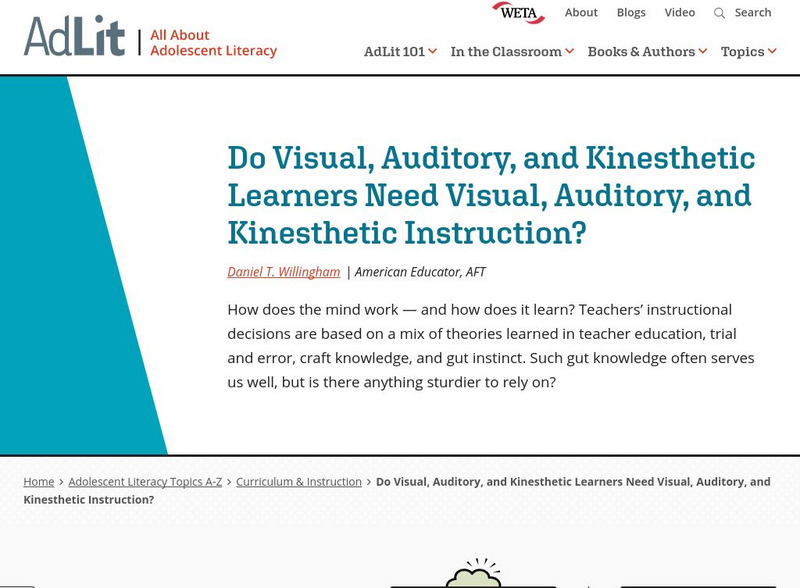Hi, what do you want to do?
Other
Media Education Foundation: Deconstructing a Video Advertisement [Pdf]
Handout that leads students through an exploration of the visual and audio elements of a video advertisement as well as the effect these elements have on the intended audience and the community as a whole.
Other
Media History Digital Library: Non Theatrical Film Collection (1918 1973)
A large collection of original publications that focused on non-theatrical uses of motion pictures, including education, training, advertising, propaganda, and amateur clubs and individuals.
Other
Media Education Foundation: Deconstructing an Advertisement [Pdf]
Outline of the steps involved and the questions to ask in critically assessing a print advertisement.
TES Global
Tes: The Media: Understanding Key Media Areas
[Free Registration/Login Required] During this unit of study, students will analyze several types of advertisements. Students will analyze how authors pay attention to the language and visuals to appeal to their audiences.
AdLit
Ad lit.org: Using Technology to Support Struggling Students
Science learning often involves creating abstract representations and models of processes that we are unable to observe with the naked eye. Learn more about visualizing, representing, and modeling to aid struggling learners.
AdLit
Ad lit.org: Classroom Strategies: Frayer Model
The Frayer Model is a strategy that uses a graphic organizer for vocabulary building. This technique requires students to (1) define the target vocabulary words or concepts, and (2) apply this information by generating examples and...
AdLit
Ad lit.org: Classroom Strategies: Mnemonics
A mnemonic is an instructional strategy designed to help students improve their memory of important information. This technique connects new learning to prior knowledge through the use of visual and/or acoustic cues. The basic types of...
AdLit
Ad lit.org: Classroom Strategies: Concept Maps
A concept map help students visualize various connections between words or phrases and a main idea. There are several types of concept maps; some are hierarchical, while others connect information without categorizing ideas.
AdLit
Ad lit.org: Classroom Strategies: Power Notes
Power Notes is a strategy that teaches students an efficient form of organizing information from assigned text. This technique provides students a systematic way to look for relationships within material they are reading. Power Notes...
AdLit
Ad lit.org: Teach the Seven Strategies of Highly Effective Readers
To improve students' reading comprehension, teachers should introduce the seven cognitive strategies of effective readers: activating, inferring, monitoring-clarifying, questioning, searching-selecting, summarizing, and...
AdLit
Ad lit.org: What Are the Key Elements of Student Engagement?
As part of their series to help schools understand the federal No Child Left Behind Law, Learning Point Associates describes the four key elements of student engagement - student confidence, teacher involvement, relevant texts, and...
AdLit
Ad lit.org: A Beach Bag Full of Summer Learning Resources
Learning shouldn't stop just because school is out. Here are some ideas to keep students reading, writing and thinking all summer long.
AdLit
Ad lit.org: Classroom Strategies: Semantic Feature Analysis
The Semantic Feature Analysis strategy engages students in reading assignments by asking them to relate selected vocabulary to key features of the text. This technique uses a matrix to help students discover how one set of things is...
AdLit
Ad lit.org: Classroom Strategies: Story Maps
Story Maps are used for teaching students to work with story structure for better comprehension. This technique uses visual representations to help students organize important elements of a story. Students learn to summarize the main...
Other
U.washington: The Basics of Poster Design
An in-depth site from the University of Washington on poster design and communicating ideas through various visual media. This site covers standard posters but also contains links for creating poster with Adobe PageMaker and Microsoft...
AdLit
Ad lit.org: Do Learner Types Need in Style Instruction?
How does the mind work - and how does it learn? Teachers' instructional decisions are based on a mix of theories learned in teacher education, trial and error, craft knowledge, and gut instinct. Such gut knowledge often serves us well,...
National Gallery of Art
National Gallery of Art: Text and Art
Students will examine the work of artist Barbara Kruger and consider how visual media, such as in print and advertising, can be constructed to influence viewers' perceptions and behaviors. Students will create their own works of art...





![Media Education Foundation: Deconstructing a Video Advertisement [Pdf] Activity Media Education Foundation: Deconstructing a Video Advertisement [Pdf] Activity](https://static.lp.lexp.cloud/images/attachment_defaults/resource/large/FPO-knovation.png)

